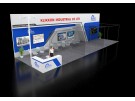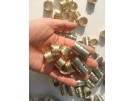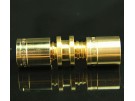Other News
If you are employed in industries from computer software development to manufacturing, you’ve probably been exposed to prototyping.
In software development, a prototype is a basic working model of an information system, either for demonstration purposes or as part of the overall development process. In manufacturing, it’s usually a physical model that represents a manufactured component closely enough for designers to visualize and test it. Here is an overview of manufacturing prototypes, from initial design to producing the actual physical part for testing.
There are 3 common prototypes in the manufacturing industry:
1. Visual: Designers sometimes use a visual prototype as a starting point for assessing a new component or product. It can be accomplished with a two-dimensional drawing, a 3d model on your computer screen, computer aided design (CAD) models, or a physical prototype, typically without working parts. A material that’s less expensive than the production material is oft-times used for the physical prototype.
2. Proof-of-Concept: Sometimes the designers need a physical object to demonstrate the basic functionality of a component. In that case, they will use a proof-of-concept prototype. It doesn’t need to be exactly like the final part, and it can be made from standard components to save money. Once again, production grade materials would not be used in this prototype.
3. Presentation: A presentation prototype combines the visual and functionality aspects of the physical prototype. This prototype is more likely to be made of production grade materials since this is often the final step that shows the component’s feasibility immediately before starting mass manufacturing.
The most common, economical ways to prototype machinery parts include 3D printing and machining.
- 3D printing is an additive manufacturing process that uses a CAD file created using a 3D modeling application or a 3D scanner that can copy an existing object, and it turns them into solid objects by building them up in layers.
The technology has been used mostly for rapid prototyping. However, in the last few years, 3D printing has started to evolve into a next-generation manufacturing technology that could be utilized in producing final products.
Today it’s possible to 3D print in a variety of materials—thermoplastics, metals, ceramics, and even food.
- Rapid CNC machining is a subtractive manufacturing process that works well for prototyping and for producing functional components for end-use applications. Just like with 3D printers, CAD files and manufacturing software combine to make parts on high-speed CNC milling and turning machines.
The advantage of subtractive prototyping is that offers an opportunity to design, prototype, and manufacture with end-use materials. It is an excellent choice if you need to have a particular finish or need to obtain certain mechanical properties.
Where do prototypes fit into the product development process?
Every organization has a different product development process. Some are well defined, others not as much. The process can even vary within the same organization. But here is an example of what the process might look like if a product engineer--or anyone else in your company, for that matter--had an idea for a new type of long-necked flange to be used in the oil and gas industry:
1. Ideation: Every new product is born from an idea. Some will come from brainstorming sessions while others originate from an individual—usually an engineer or designer—who might only sketch out the idea for a new and improved flange on a sheet of paper.
2. Visual Evaluation: While an idea can be visualized initially via a sketch, eventually, someone needs to creates a 3D drawing and digitize the concept, with all the necessary details. Design software programs such as AutoCAD or SOLIDWORKS are often used to create a computer-assisted drawing (CAD). At this point in the process, the designer has created a visual prototype or as we commonly refer to as the CAD. Software advancements allows us to conduct fundamental analysis and testing of the new design. If it passes this step, the research and development process will continue.
3. Physical Test: To find out if the new flange design is an improvement over the previous part, a proof-of-concept or presentation prototype flange is made to confirm the viability of the new concept. During this stage, the design and dimensions of the working model are tweaked, if needed, and the flange is retested. You might make up to 50 physical prototypes to undergo several rounds of vigorous engineering verification tests (EVT). This “Pre-Production Prototype” testing is critical before investing further to mass production and marketing.
Finally, the idea is ready to be tested in the real world. Manufacturers might continue with the same machining partner or look to other options to mass produce. This really depends on the type of product or machinery part and economies of scale. If you’re fortunate, the shop who created your physical prototype also has the capabilities to do production machining. In the case of the long-necked flange, a shop with multi-axis equipment could make short runs of this part.
Not all machine shops are equal so choose a machining partner with dual capabilities. Klikkon offers rapid prototyping and cnc machining services for research scientists, entrepreneurs, and small businesses. Our factories are ISO 9001 compliant and can provide you with quality partsproduced on three, five, and seven-axis CNC machines. And we will work with you to meet your budget and deadlines.
Need to produce a physical prototype for testing? Here are a few best practices on the RFI and RFQ process or read more on outsourced manufacturing.













